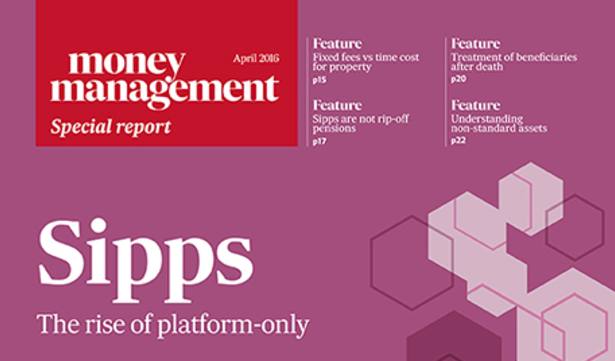
As we approach the first anniversary of the pension freedoms, many will be looking around the market to see which products have been the biggest winners. A quick glance through this survey might tell you that self-invested personal pensions (Sipps) could be in with a shot at winning first prize. The amount of Sipps set up in the past six to 12 months has been phenomenal.
The headline figures in this survey reveal that Sipps are growing at a rapid pace. The number of plans set up has risen by 11 per cent year-on-year, and is a massive 97 per cent higher than October’s results. Chart 1 shows the growth of the total number of Sipps over the past two years using each of Money Management’s biannual surveys.
This could be due to people investing at different stages of the year, or it could be down to another reason – panic. Fidelity recently revealed it saw a 203 per cent jump in Sipp contributions in February this year compared with the year before, amid Budget concerns. The figure usually rises around April, but Fidelity believes pre-event speculation around the chancellor’s speech this year has made inflows rise rapidly. It reported a rise of 41 per cent in the last week of February alone.
But it is not just platform-only Sipps that have seen an increase so far this year, full and traditional Sipps are also seeing a rise in interest. Claire Trott, head of pensions technical at Talbot and Muir, says, “The beginning of 2016 has been particularly busy, with our best February on record. I don’t believe this is all to do with fears related to the Budget because the majority of Sipps established involve transfers from other pensions. We have seen an increasingly strong interest in commercial property, which I am sure is partly to do with it being a physical asset and not linked to the volatile stock market.”
It should be kept in mind that all figures are as at 31 December 2015 unless otherwise specified, so inflows this year will not be included in any data within this survey.
The next six months will be undoubtedly difficult for many smaller Sipp providers with a high percentage of non-standard assets. The September deadline has been looming for nearly two years, so all providers should theoretically be prepared to have the required amount in reserve. But due diligence is also key. Last year’s ‘Dear CEO’ letter from the FCA suggested there are still some operators failing to undertake ‘adequate’ due diligence.
The numbers
This year’s survey covers 74 plans across 53 providers, up from 67 plans from 50 providers in October’s survey. Money Management sends the survey to more than 70 Sipp providers with over a month to respond, and we hope more will return the survey in October.
Although it should not necessarily be the first port of call, charges are very important to many advisers when it comes to picking a Sipp plan. Table 1 looks into charges, including initial charges, annual management charges and transfers in and out. Overall, the figures have not changed a great deal since October’s survey, and they tend to increase very gradually. While service is an important factor in picking a Sipp provider, the charges also play a large part and can easily put clients off.






